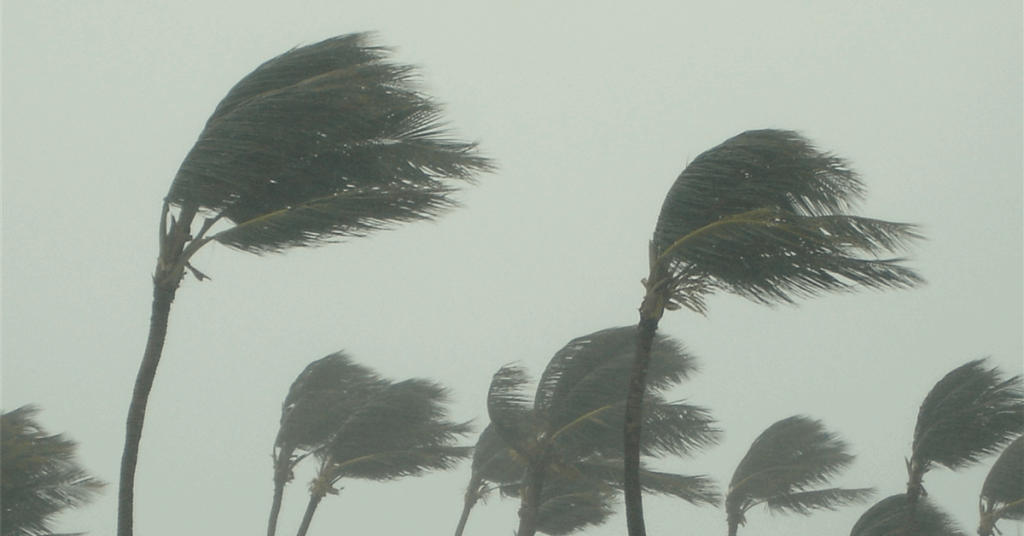In a statement posted on its website recently, the U.S. Department of Commerce’s National Oceanic and Atmospheric Administration (NOAA) said forecasters within its National Weather Service predict above-normal hurricane activity in the Atlantic basin this year.
The organization noted in the statement that its outlook for the 2025 Atlantic hurricane season predicts a 30 percent chance of a near-normal season, a 60 percent chance of an above-normal season, and a 10 percent chance of a below-normal season. The Atlantic hurricane season runs from June 1 to November 30, NOAA highlighted in its statement.
NOAA said in the statement that the agency is forecasting a range of 13 to 19 total named storms. Of those, six to 10 are forecast to become hurricanes, including three to five major hurricanes, NOAA warned in the statement, adding that it has a 70 percent confidence in these ranges.
In its statement, NOAA said the season is expected to be above normal “due to a confluence of factors, including continued ENSO-neutral conditions, warmer than average ocean temperatures, forecasts for weak wind shear, and the potential for higher activity from the West African Monsoon, a primary starting point for Atlantic hurricanes”.
“The high activity era continues in the Atlantic Basin, featuring high-heat content in the ocean and reduced trade winds. The higher-heat content provides more energy to fuel storm development, while weaker winds allow the storms to develop without disruption,” NOAA added.
NOAA also warned in the statement that this hurricane season features the potential for a northward shift of the West African monsoon, “producing tropical waves that seed some of the strongest and most long-lived Atlantic storms”.
In the statement, Commerce Secretary Howard Lutnick said, “NOAA and the National Weather Service are using the most advanced weather models and cutting-edge hurricane tracking systems to provide Americans with real-time storm forecasts and warnings”.
“With these models and forecasting tools, we have never been more prepared for hurricane season,” he added.
Acting NOAA Administrator Laura Grimm said in the statement, “as we witnessed last year with significant inland flooding from hurricanes Helene and Debby, the impacts of hurricanes can reach far beyond coastal communities”.
“NOAA is critical for the delivery of early and accurate forecasts and warnings, and provides the scientific expertise needed to save lives and property,” Grimm added.
NOAA’s National Weather Service Director Ken Graham said in the statement, “in my 30 years at the National Weather Service, we’ve never had more advanced models and warning systems in place to monitor the weather”.
“This outlook is a call to action: be prepared. Take proactive steps now to make a plan and gather supplies to ensure you’re ready before a storm threatens,” he added.
In its statement, NOAA noted that its outlook is for overall seasonal activity and is not a landfall forecast. It added that its Climate Prediction Center will update the 2025 Atlantic seasonal outlook in early August.
Atlantic weather systems have severely affected oil and gas operations in the Gulf in the past. For example, at its peak, Hurricane Ida shut in 95.65 percent of oil production in the Gulf on August 29, 2021, and 94.47 percent of gas production on August 31, 2021, U.S. Bureau of Safety and Environmental Enforcement (BSEE) figures revealed.
In a statement released on its site on November 25, 2024, NOAA said the 2024 Atlantic hurricane season showcased above average activity, “with a record-breaking ramp up following a peak-season lull”.
The Atlantic basin saw 18 named storms in 2024, that statement noted, adding that 11 of those were hurricanes and that five intensified to major hurricanes. Five hurricanes made landfall in the continental U.S., with two storms making landfall as major hurricanes, NOAA said in that statement.
In a statement posted on its site earlier this month, NOAA said it predicts a “less active 2025 central Pacific hurricane season”. NOAA outlined in that statement that forecasters with its Central Pacific Hurricane Center and Climate Prediction Center see a 30 percent chance of below-normal tropical cyclone activity for the central Pacific hurricane season, a 50 percent chance of a near-normal hurricane season, and a 20 percent chance of above-normal activity.
“In terms of storm numbers, the forecast calls for 1-4 tropical cyclones across the central Pacific, which is located north of the equator between 140°W and the International Date Line,” NOAA said in that statement.
“A near-normal season has four or five tropical cyclones. Tropical cyclones include tropical depressions, tropical storms and hurricanes,” it added.
To contact the author, email andreas.exarheas@rigzone.com
element
var scriptTag = document.createElement(‘script’);
scriptTag.src = url;
scriptTag.async = true;
scriptTag.onload = implementationCode;
scriptTag.onreadystatechange = implementationCode;
location.appendChild(scriptTag);
};
var div = document.getElementById(‘rigzonelogo’);
div.innerHTML += ” +
‘‘ +
”;
var initJobSearch = function () {
//console.log(“call back”);
}
var addMetaPixel = function () {
if (-1 > -1 || -1 > -1) {
/*Meta Pixel Code*/
!function(f,b,e,v,n,t,s)
{if(f.fbq)return;n=f.fbq=function(){n.callMethod?
n.callMethod.apply(n,arguments):n.queue.push(arguments)};
if(!f._fbq)f._fbq=n;n.push=n;n.loaded=!0;n.version=’2.0′;
n.queue=[];t=b.createElement(e);t.async=!0;
t.src=v;s=b.getElementsByTagName(e)[0];
s.parentNode.insertBefore(t,s)}(window, document,’script’,
‘https://connect.facebook.net/en_US/fbevents.js’);
fbq(‘init’, ‘1517407191885185’);
fbq(‘track’, ‘PageView’);
/*End Meta Pixel Code*/
} else if (0 > -1 && 88 > -1)
{
/*Meta Pixel Code*/
!function(f,b,e,v,n,t,s)
{if(f.fbq)return;n=f.fbq=function(){n.callMethod?
n.callMethod.apply(n,arguments):n.queue.push(arguments)};
if(!f._fbq)f._fbq=n;n.push=n;n.loaded=!0;n.version=’2.0′;
n.queue=[];t=b.createElement(e);t.async=!0;
t.src=v;s=b.getElementsByTagName(e)[0];
s.parentNode.insertBefore(t,s)}(window, document,’script’,
‘https://connect.facebook.net/en_US/fbevents.js’);
fbq(‘init’, ‘1517407191885185’);
fbq(‘track’, ‘PageView’);
/*End Meta Pixel Code*/
}
}
// function gtmFunctionForLayout()
// {
//loadJS(“https://www.googletagmanager.com/gtag/js?id=G-K6ZDLWV6VX”, initJobSearch, document.body);
//}
// window.onload = (e => {
// setTimeout(
// function () {
// document.addEventListener(“DOMContentLoaded”, function () {
// // Select all anchor elements with class ‘ui-tabs-anchor’
// const anchors = document.querySelectorAll(‘a .ui-tabs-anchor’);
// // Loop through each anchor and remove the role attribute if it is set to “presentation”
// anchors.forEach(anchor => {
// if (anchor.getAttribute(‘role’) === ‘presentation’) {
// anchor.removeAttribute(‘role’);
// }
// });
// });
// }
// , 200);
//});

